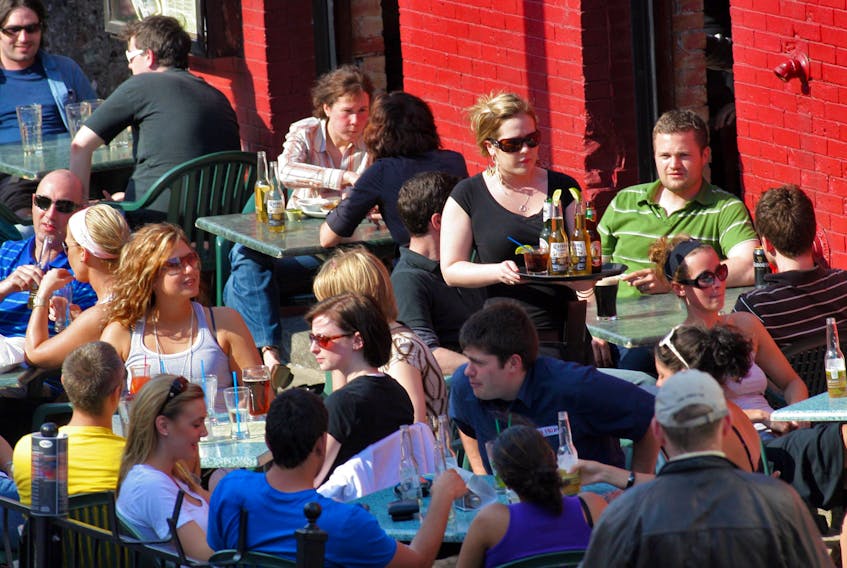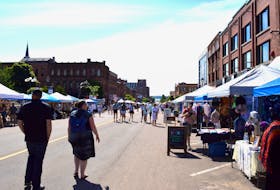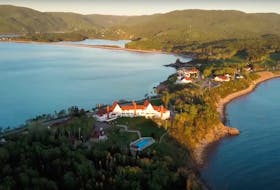There is little doubt that tourism is one of the sectors hardest hit by the pandemic. The question is how hard and what can be done to mitigate the damage this season.
Let’s start with a quick look at the industry’s main components—accommodations (mostly driven by non-resident visitors), food and beverage services (mostly driven by residents) and travel services, transportation as well as recreational and entertainment.
A half billion dollar industry at risk
Tourism was credited with generating more than $500 million of economic activity and more than 8,500 full-time equivalent jobs in Prince Edward Island in 2019. But this sector doesn’t relate only to those visiting the province on vacation. This economic activity includes in-province spending by residents as well as expenditures by non-resident visitors. True tourism (that related to vacation travel only) is not really a year round activity in PEI. Most visitors, wisely perhaps, arrive between May and October.
The rest of the year, visitors to the province are generally here for business or attending conferences, visiting friends and family or making a short trip from other parts of the region for shopping or entertainment. Only about half of non-resident visitors are vacationing. It would be more appropriate to call this sector the Travel and Hospitality Industry.
Bars and restaurants may be first to bounce back
Here are some critical numbers to think about: half of all tourism revenue in the province comes from bars and restaurants and most of that money is spent by Islanders. This is encouraging and suggests that once restaurants and bars are able to open fully, revenues there should recover the quickest. The story is quite different for accommodations which depend much more on out-of-province visitors.
From-aways are staying away
The cancellation of cruise visits this year will have a direct impact on most tourist operations and tour operators. The Port of Charlottetown was expecting more than 180,000 cruise visitors this season.
In 2019, there were more than 1.5 million non-resident visitors to the Island. They represent more than half the tourism dollars spent in the province. Having the Island’s borders closed to other provinces in the region is particularly harmful, as visitors from the region represent nearly half of all non-resident visitors to the province.
Closed borders making the problem worse
The closure of the US-Canada border until late June puts at risk visits by the large number of Americans who visit the Island each year. Those visiting from Ontario or Quebec are unlikely to have access to the Island this season. International travellers have no access to Prince Edward Island right now and may not for some time.
So what do we do?
The most important priority to minimize the damage to the tourism industry in PEI is to open up the market to travel within Atlantic Canada by creating an economic regional bubble. With the low incidence of active COVID-19 cases within the region, we should focus on the 2.4 million potential visitors in Atlantic Canada as a way to mitigate the damage to the tourism industry across the region. This strategy would include providing early access to those owning recreation property in other provinces in the region. Once the US-Canada border is open, allowing Americans access to their recreation properties should be priority, perhaps with a 14-day quarantine period.
An Atlantic economic zone
The four Atlantic Provinces enjoy an unusually close economic and cultural relationship, perhaps unique in the country. Creating an Atlantic economic zone until travel from outside the region is safe is in the best interests of all four provinces, not only for tourism, but business in general. Clearly, the Atlantic Provinces should be talking now and developing a plan to open up the region for travel by establishing clear criteria to do so safely. Promoting staycations will not be enough to minimize the negative impact on tourism within any given province.
This is especially true for accommodations or specific activities targeting out-of-province visitors like meetings and conventions or golf excursions.
Tourism strong
Each province should revise its marketing plan to focus on the regional market, with a common theme to encourage travel across the region. Special incentive packages could be developed by each. A buy Atlantic Canadian strategy for vacation travel could be considered as a joint undertaking by the four provinces. Encouragingly, the four provincial industry associations are about to launch a new Tourism Strong Atlantic program.
Given that most large events, like festivals and concerts will not take place, the emphasis of any regional marketing must be on individual experiences and activities. There really isn’t a better place to vacation during the summer and fall than in Atlantic Canada after all. I am already planning trips to both New Brunswick and PEI once allowed to do so. How about you?









